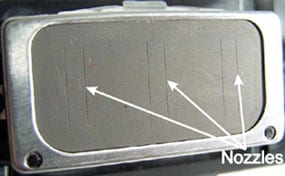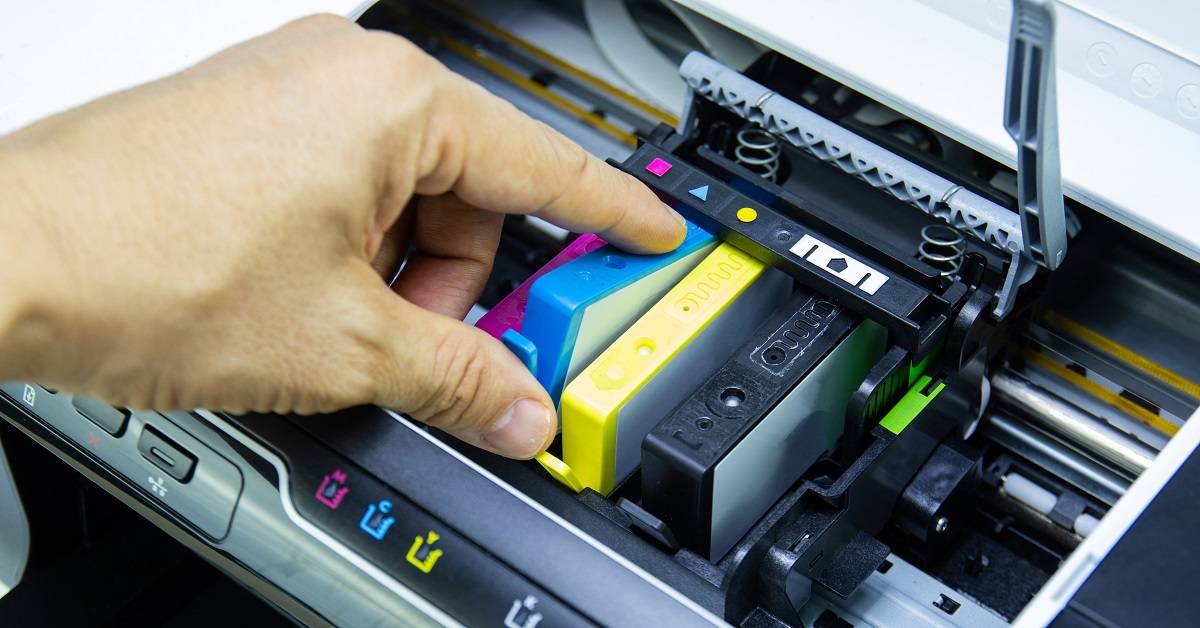Inkjet Printing
Understanding how your printer works can help you understand its advantages and limitations, and help you diagnose and rectify print quality problems. Here is a brief overview of inkjet technology which also offers some guidance on minimizing print quality problems.
How Inkjet Printers Work
An inkjet printer creates an image by placing droplets of ink onto the paper. These droplets are so tiny that they are smaller in diameter than a human hair. The droplets are placed onto the page with extreme precision and the number of these droplets or dots of ink determines the resolution and therefore the quality of the image.The greater the number of dots per inch (dpi), the higher the resolution and the higher the quality, of the printed output.For example, a resolution of 720 x 720 dpi could produce up to 518,400 dots of ink on a square inch of paper!To make up the many different colors and shades in an image these dots of ink are combined together in a tiny array to produce the full range of color in an image. This system is known as half-tone printing.There are two main ways that inkjet technology is implemented—thermal and piezo-electric.
Thermal Inkjet
This technology, also known as bubble jet is used in Canon and HP printers. It works through ink being heated in a chamber in the print head until a bubble is formed. As the bubble expands, ink is displaced and forced through a tiny nozzle onto the paper. When the bubble bursts a vacuum is created, drawing more ink from the cartridge into the print head. A thermal inkjet print head can have as many as 600 of these nozzles, all capable of firing at the same time.
Piezo-electric Inkjet
This is Epson’s patented technology and is used in their range of inkjet printers. It uses a piezo-electric element, at the back of an ink reservoir, which vibrates when an electric current is passed through it. When the element flexes inward it forces a droplet of ink out of the nozzle, when it flexes outward it draws replacement ink in from the reservoir.
Print head
The mechanism for delivering the ink to the paper is called the print-head. The print-head is made up of many tiny nozzles, through which the ink is sprayed on to the paper. Depending on the make and model of the printer, the print-head can be part of the ink cartridge or a separate unit which is either user replaceable (Canon and HP use both of these systems) or fixed into the printer (as used in Epson inkjets).

Hewlett-Packard print head

Epson print head
To maintain optimum print quality, the print head needs to be kept free of air, dry ink, paper fiber and other debris which can block the nozzles and cause gaps and banding in the printed output.When you run the print head cleaning procedure for your printer you are performing a physical cleaning operation of the print head. The print head is wiped clean and ink is sucked through the nozzles to remove any air trapped inside the print head and cartridge.
Minimizing printing problems
The best way to ensure reliable operation of your printer is to use it regularly! Most complaints regarding print quality issues can be avoided by frequent use of the printer. This is because when the printer is left idle for some time, ink may dry in the print head nozzles which then become blocked and cause streaking and white lines in your print outs.
- Always use the printers on/off button to power down the printer! Most inkjet printers have a print head park function which ensures the print head is positioned and sealed correctly and not exposed to the drying effects of the ambient air. If you switch off the printer at the mains socket the print head will not park correctly!
- Only remove an empty cartridge when you can replace it immediately. Leaving the printer without cartridges installed can allow air to enter the print head and cleaning assembly, causing the ink to dry out. This can result in one or more colors not printing correctly when a new cartridge is installed.
- Avoid removing a cartridge to check the ink level. The ink is contained in a sponge material which will always appear to be full, even when the cartridge is empty.
- Clean the print heads when you replace a cartridge. When a cartridge is replaced a small amount of air may enter the print head. This air needs to be removed, and this is accomplished by running the Nozzle Check and Head Cleaning procedures.
You may also be interested in our security portfolio. For further assistance, feel free to give us a call 888-865-4639. We’d love to help.





